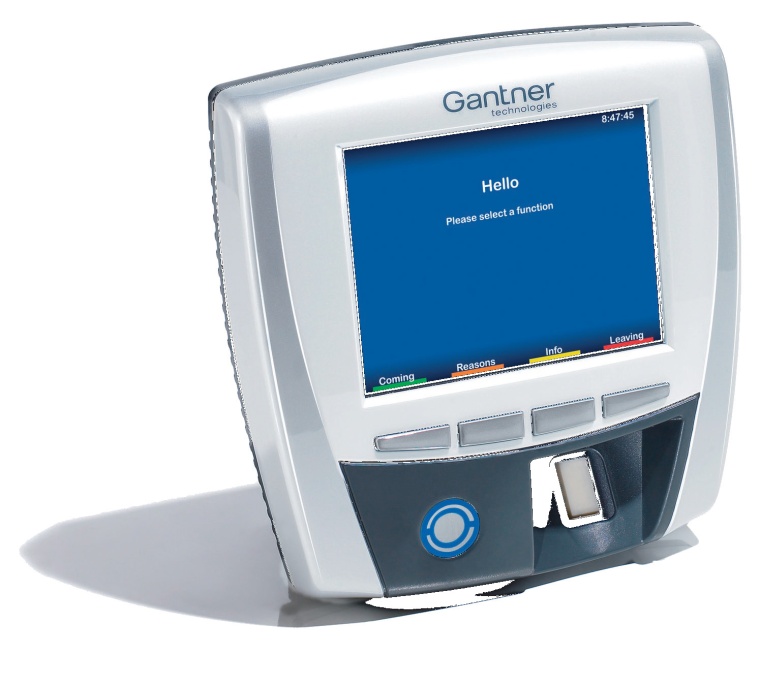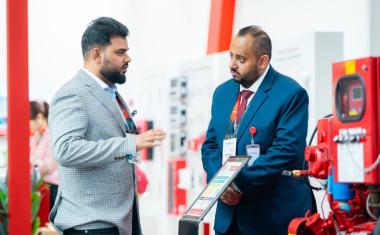Gantner Electronic: electronic identification using chips or almost nothing at all
Gantner Electronic: electronic identification using chips or almost nothing at all. Development in electronic components has enabled continuous improvements in personnel and visito...

Gantner Electronic: electronic identification using chips or almost nothing at all. Development in electronic components has enabled continuous improvements in personnel and visitor identification technology to the point where it is no longer necessary to carry anything with you.
Not so long ago, opening a barrier by just waving your wrist towards it would have been the stuff of science-fiction films. But the technology has already been around for some time to make this possible and RFID is now in daily use around the world. One of the companies who were in at the start of this development is Gantner Electronic, an Austrian company founded in 1982 to develop electronic identification systems for the safety industry.
Shaping electronic identification literally from the onset, their innovative development team has already contributed a few pages to the history of contactless identification. It continues to develop products and solutions that are found in time recording and access control systems, in the fitness markets and in the leisure industry and now has a complete product palette covering safety and security.
Exact and reliable identity confirmation has become crucial to prevent fraud and even more serious crime. There are a number of levels of security that can be chosen according to the risk involved. The simplest would be to ask someone their name, but can you really believe them? Issuing a person with a unique identity document or device immediately increases security and simultaneously reduces labour costs by enabling unmanned entrances and exits.
Familiarity Breeds Smiles
We are all familiar with identity items such as passports and driving licences, but even the ignition key to your new car now has a chip in it to confirm validity. Such an embedded component is often contactless and can come in one of many different physical formats to suit the purpose. The corresponding terminals have also developed tremendously in recent years. For example, the aesthetic GAT p.time ST290 is much more than an ordinary time recording terminal, not only because of its attractive design, but also because of its persuasive functionality. The large colour touch screen, its web-compatible operational system and an Ethernet connection turn it into a true personnel information centre.
The terminal performs time recording as well as displaying general or personalised information. Logical user guidance and a clear layout all minimise erroneous entries and reduce corrective measures. A barcode reader can also be connected to the terminal, for example to record simple order times.
A relay output can control a door which can only be opened by those persons with a valid ID.
Induced to Transmit
An RFID token or tag can improve safety, efficiency, and convenience if it is sensibly applied. It consists of an embedded chip that is powered and activated only when within range of an antenna, typically only a few millimetres, without any physical contact. For example, the Legic chip system for electronic access control and time recording can also be extended to provide cashless payments.
Such an installation would include topup and payment units in canteen cashier systems and vending machines that provide either optical and acoustic signals to users or feature large colour touch screens with clear, active user guidance. When in ‚standby‘ they can earn their keep as an info terminal or for advertising messages. The latest processor technology provides the most power possible, which is demonstrated by the fact that new readers capture the entire bandwidth of contactless 13.56 MHz chips, from the Legic prime, via the Legic advant to the UID identification of Mifare, ISO 15693 and HID I-Class. Communication with the access control terminal is based on a data bus, in which the highest level of data security is guaranteed by AES encryption.
The Ultimate Biometrics
In nature, no two things are exactly alike. Every human being is unique by his or her specific characteristics. Identification technology takes advantage of this fact for the highest level of security and maximum convenience. Wherever a chip and PIN code are insufficient for security reasons, biometrics is the right solution. The authorised chip matches a single fingerprint, and a system will identify it beyond all doubt.
Any fraudulent attempt would lead to a manipulation alarm. Neither an ID nor a key are needed either to perform time recording using a fingerprint or to obtain access using biometric identification. Whether this is then combined with entry of one’s personnel number, a chip identification or similar will depend on the specific requirements.
Combined with a keypad, it is possible to enter an attack code that will initiate a silent alarm while apparently providing authorised access. Most importantly, however, the fingerprint will always be a part of the identification process.
A Turnkey System
Rather than turning keys these days, a well thought-out system that covers all areas can also include the locking systems within a company. The same data carrier, which is used for access control, parking garage, time recording, and cashless payments also allows you to open and lock cabinets and lockers. No more keys, no need to change the lock in the event of a lost key, and organised use of lockers by several people, for example, in shift work – all of that is easy to realise.
\This can be either a wired locking system with the benefit of a centralised display of the level of saturation, break-in alarm, and remote control or alternatively battery- operated locks that replace a coin lock, with all the benefits of decentralised intelligence.
When choosing a supplier of access control it is always important to remember that product developments must remain compatible with existing systems. The possibility of expanding a system at any time provides the security of user’s investment.
Soft Administration
Of course, such systems do require administration and this is achieved with customised software packages that can be combined to provide the required level of functionality. An access control module will administer staff access credentials according to time and local criteria and provide event evaluation.
But most companies also have visitors, so a specific module monitors them, or the staff of third party companies, and initiates an alarm if the expected duration of their stay is exceeded. Where cards are used for staff ID, these can be designed with an individualised printing package.
Interfaces to other company administration software are also often necessary, for example for data exchange with SAP via CC1 or HRPDC interfaces.
Security management must have a complete overview, comprehend all events and be informed immediately in the case of an alarm, so standardised interfaces to any kind of facility management system are provided.
“More than safe” has always been the company’s core objective so that staff members, visitors and the infrastructure are comprehensively protected.
Contact:
Gantner Electronic GmbH,
Schruns, Austria
Tel.: +43 5556 737 840
Fax: +43 5556 737 848 000
access@gantner.com
www.gantner.com













